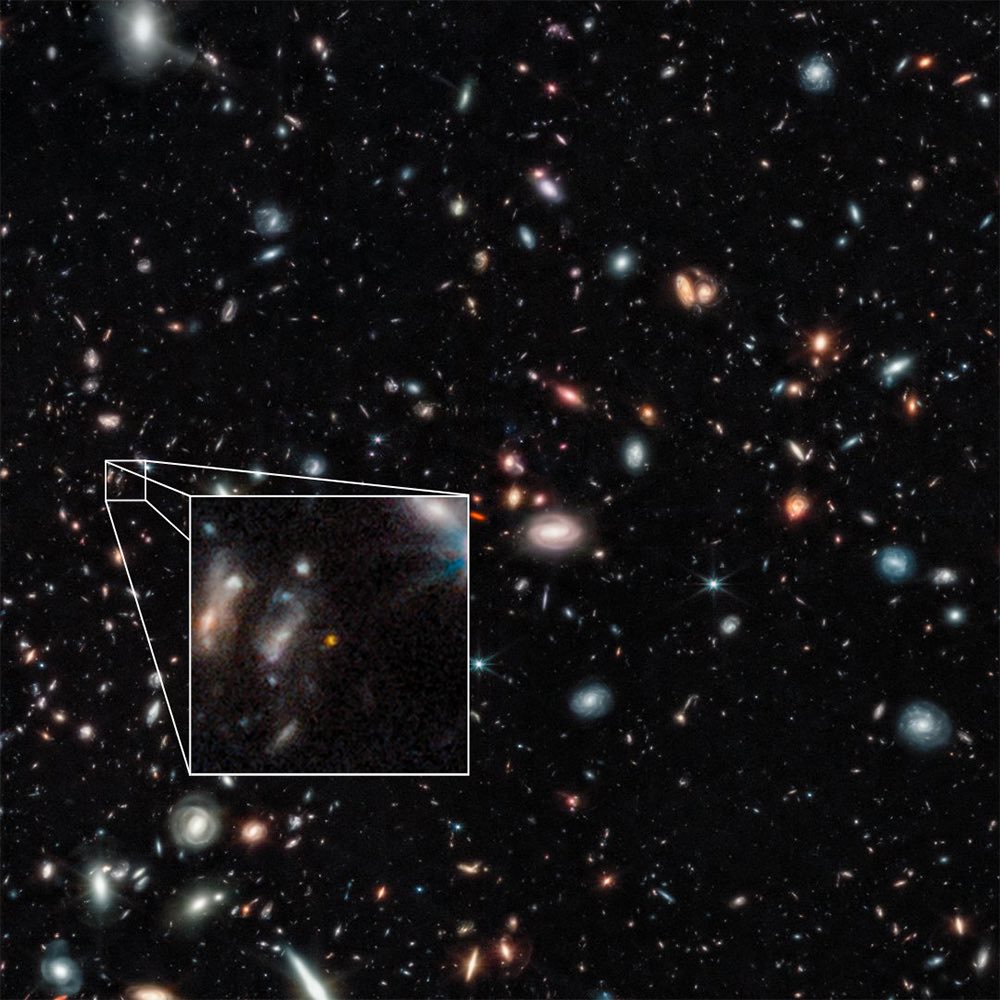STORY WRITTEN FOR CBS NEWS & USED WITH PERMISSION

The James Webb Space Telescope has spotted a remote galaxy shining just 350 million years after the birth of the cosmos 13.8 billion years ago, surprising astronomers who are struggling to figure out how stars and galaxies could have formed so rapidly in the wake of the Big Bang, researchers said Thursday.
“These observations just make your head explode,” Paola Santini, a co-author of a paper describing the discovery in the Astrophysical Journal Letters, said in a statement. “This is a whole new chapter in astronomy. It’s like an archaeological dig, and suddenly you find a lost city or something you didn’t know about. It’s just staggering.”
No one yet knows when the first stars turned on after the so-called “dark ages” ended and light first began to travel freely through the universe. But “I think anything earlier than 100 million years would just be really weird,” Garth Illingworth, a Webb astronomer and professor at the University of California Santa Cruz, told reporters.
“We were mostly thinking a couple of hundred million years was likely to be where the very first things formed,” he said. “But these galaxies potentially are so massive that it may push us back earlier than that two hundred. This is really a great open question — when did the first stars form? And so these galaxies, I think, will be a pathfinder to that.”
The galaxies in question are GLASS-z12, shining 350 million years after the Big Bang, and another dating back to 450 million years, discovered after just four days of analysis as part of the Grism Lens-Amplified Survey from Space, or GLASS, observing program.
As the name implies, the extremely distant galaxies were found in light being gravitationally magnified, or “lensed,” by the mass of a nearer galaxy cluster. The two observations straddle the previous Hubble record holder, galaxy GN-z11, which was dated to about 400 million years.
The ages of the newly discovered galaxies are not yet fully confirmed — additional spectroscopic analysis is required for that — but astronomers said the observations show clear signs of numerous potentially older galaxies, which would push star formation back even closer to the Big Bang.
“These galaxies would have had to have started coming together maybe just 100 million years after the big bang,” Illingworth said in the NASA statement. “Nobody expected that the dark ages would have ended so early. The primal universe would have been just one hundredth its current age. It’s a sliver of time in the 13.8 billion-year-old evolving cosmos.”
Tommaso Treu, principal investigator for the GLASS project and a professor at the University of California at Los Angeles, said the survey was meant “to be a way for the astronomical community to get a quick look at what surprises the universe had prepared for us.”
“And the universe and JWST did not let let us down,” he said. “As soon as we started taking data, we discovered there are many more luminous distant galaxies than we had been expecting. Somehow, the universe has managed to form galaxies faster and earlier than we thought.
“Just a few 100 million years after the Big Bang there are lots of galaxies. JWST has opened up a new frontier, bringing us closer to understanding how it all began. And we have just started to explore it.”
The James Webb Space Telescope is the most powerful space observatory ever launched, equipped with a segmented 21.3-foot-wide mirror and four sensitive cameras and spectroscopic detectors operating at less than 50 degrees above absolute zero.
The ultra-low temperature is required to enable the telescope to capture faint light that has been stretched into the infrared region of the spectrum by the expansion of space itself over the life of the cosmos.
Launched on Christmas Day last year, JWST is in its fifth month of science operations.
“JWST has been a gift that has taken months to unwrap and the result was that almost across the board, the observatory is more powerful than our pre-launch expectations,” said Jane Rigby, Webb operations project scientist at NASA’s Goddard Space Flight Center.
“The images are sharper, the pointing and guiding are more stable, with darker skies, darker backgrounds and greater, better sensitivity.” The initial results from the GLASS project, she added, “are just some of the flood of new discoveries that are pouring in. Just as we hoped,”
